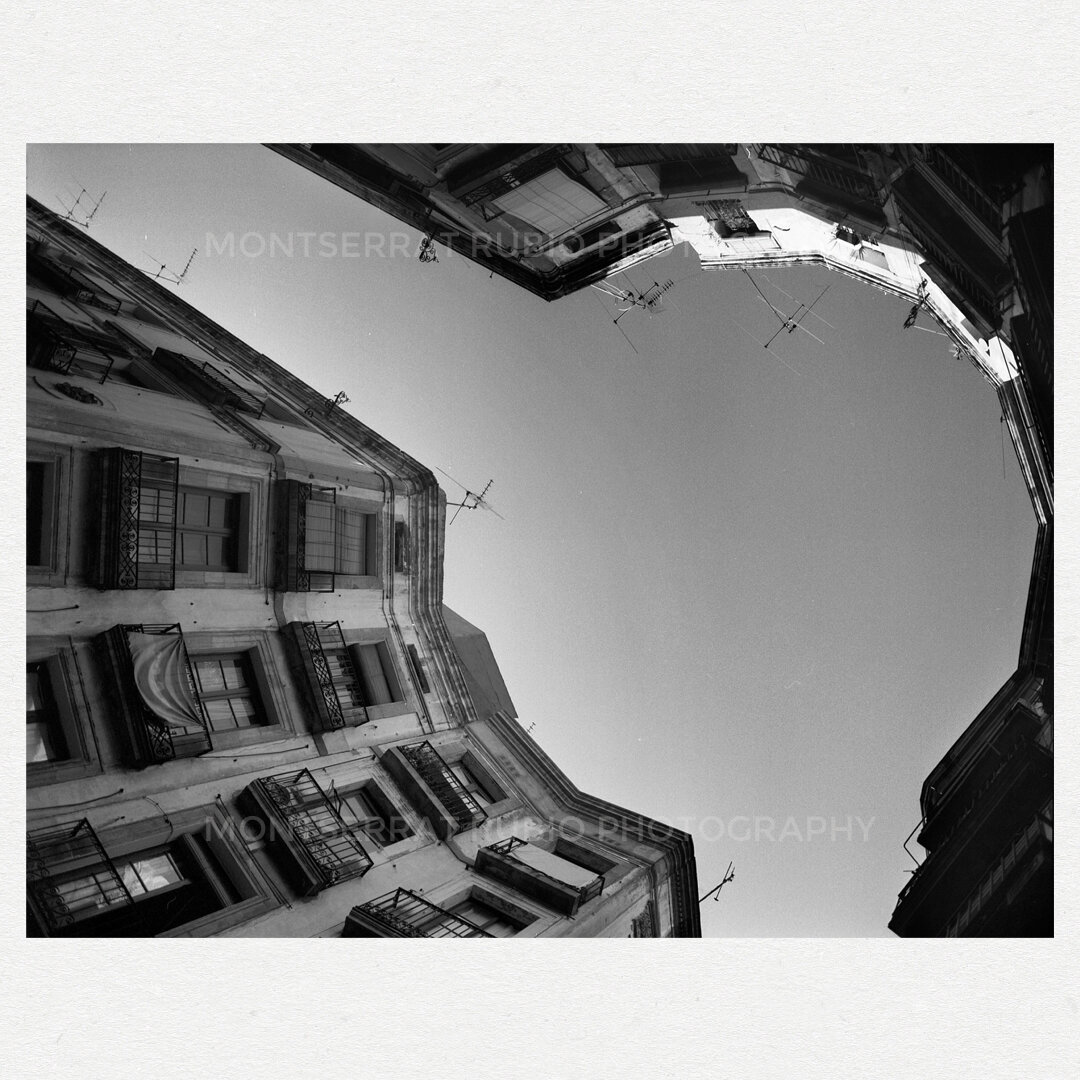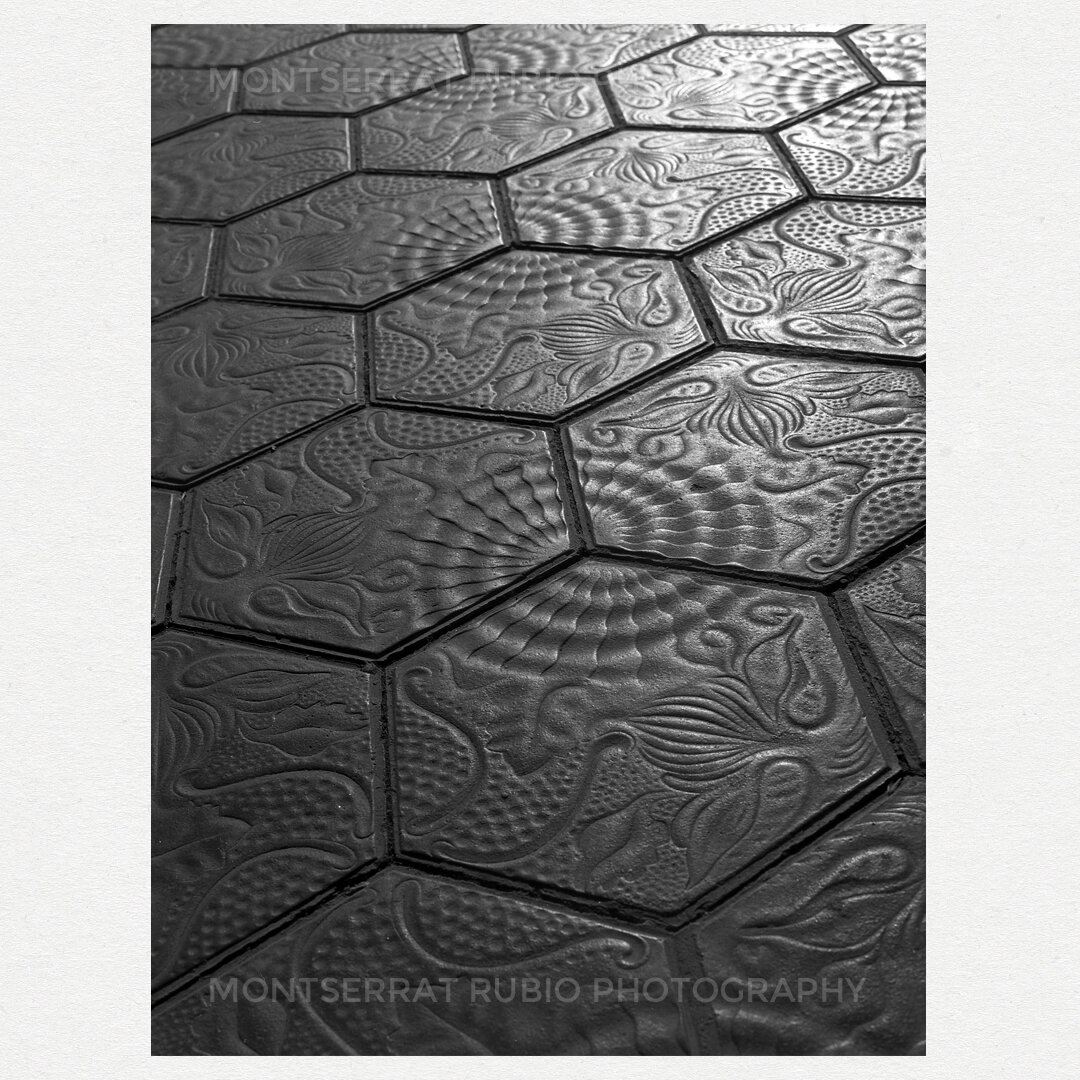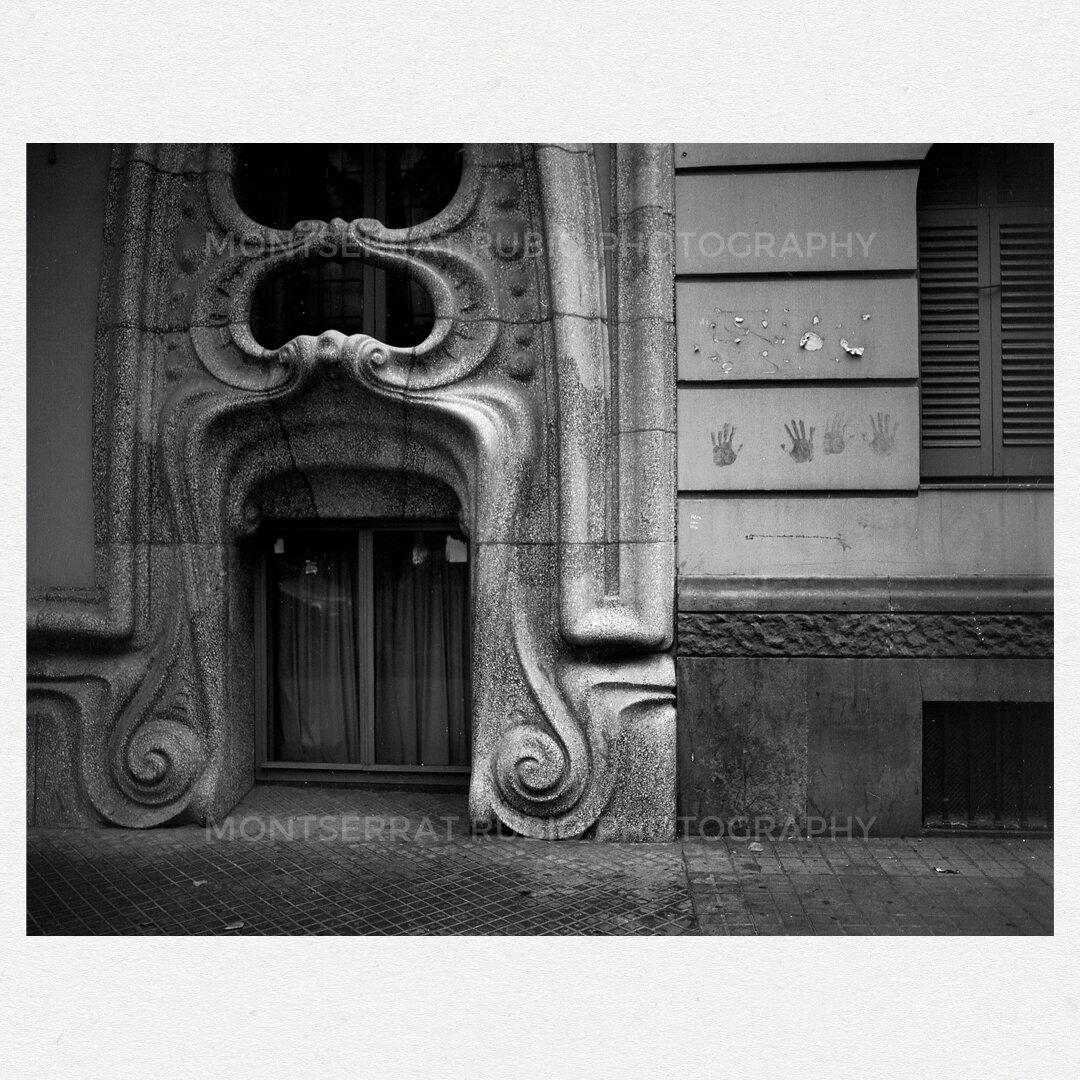This trio were shot on a morning walk with my Bronica ETRS
Barcelona is full of architectural hidden gems and this is one of the most unusual streets of the city. If you wander around Carrer Avinyó with a camera, its possible to end up in Carrer Milans and when that happens, you first notice it’s shape and then you cannot resist taking the photo looking up, it’s almost compulsory. Even the locals expects you to do it. We owe this urban rarity to Francesc Daniel Molina, the city’s architect who also worked on Plaça Reial. Created circa 1855, after Palacio Reial Menor ( originally a Templar Palace) was demolished. Molina ingeniously designed this little square at the point where the two sections of this narrow street converge in the form of an obtuse angle. It was a way to achieve greater luminosity for the buildings, by making their facades more spacious.



Leaving the old quarter, past Plaça Catalunya and walking up away from the sea, my feet landed on one of my favourite Panots ( pavement tiles) of Barcelona. There are at least 13 different panots all over the city, all unique and designed by architects such as Gaudí and Puig i Cadafalch. The ones on Passeig de Gracia are embedded in my memories of growing up and discovering the world through my city. They were different ( larger and in green/ blue tones ) back in the 70s - 80s, the ones you walk on these days date from the late 1990s. Designed by Antoni Gaudí in 1904, they were originally created for Casa Batlló, with its hexagonal shape, breaking with the tradition of square tile- with three different shapes inspired by three marine elements: a starfish, algae and a fossil of the Ammonite class; the complete design can be seen with seven tiles and shows Gaudí ’s constant inspiration and feed from nature.
Continuing the ramble, up towards the hills and taking a right turn , I found another architectural gem worth your film stock. The Casa Comalat was built between 1906 and 1911 by Salvador Valeri i Pupurull for a moneylender, Mr. Comalat who commissioned this project as his home. The building looks over Avinguda Diagonal and Carrer Corsega and both share the same architectural late modernist style and inspired by Antoni Gaudi.
